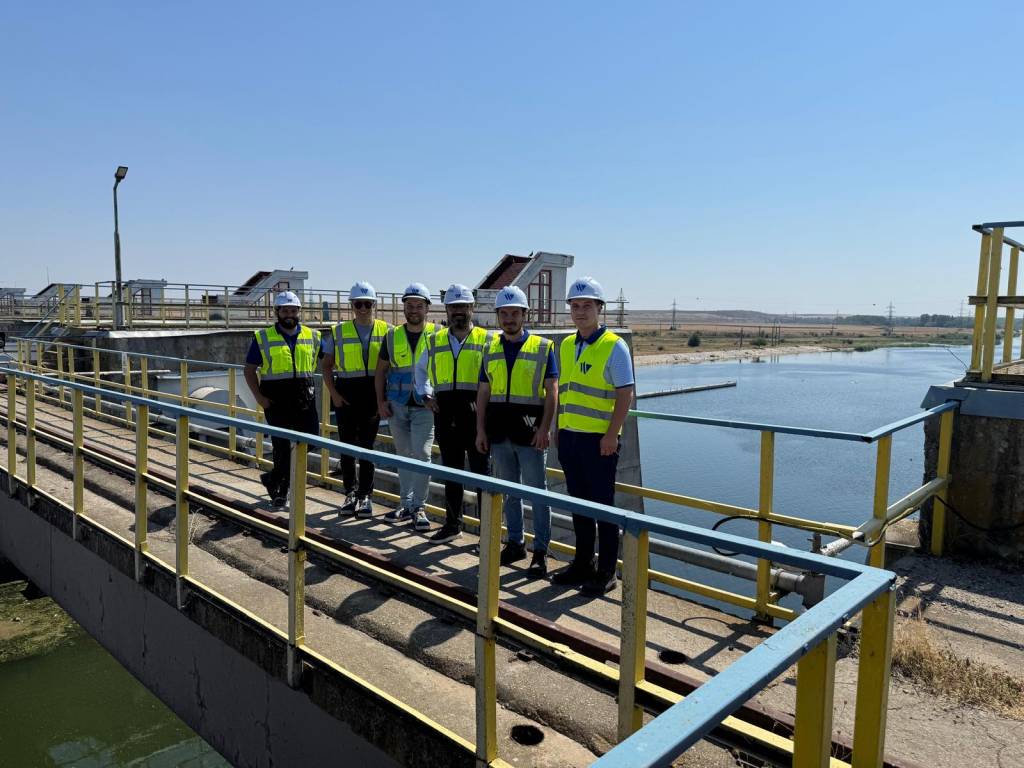Source: Energynomics
The “Nufărul” project marks a turning point for solar energy in Romania
The Nufărul Pilot Project marks a milestone for the Romanian energy market: it is the first floating photovoltaic system implemented by Hidroelectrica, a first that opens completely new operational directions for the largest national green energy producer. Awarded to WALDEVAR Energy, the project offers the chance of confirmation for innovative technologies and value chain actors in Romania. With a solid experience in EPC and large-scale photovoltaic projects, WALDEVAR is coordinating the implementation in partnership with firms specialized in marine solutions, hydrological modeling and energy integration. We spoke to Daniel Dragomir, Chief Operating Officer of the Floating PV Systems division, about the significance of this award, the technical challenges involved and the future of floating solar energy in Romania.
 What made the difference in the public procurement procedure and what were the strengths of WALDEVAR Energy’s bid?
What made the difference in the public procurement procedure and what were the strengths of WALDEVAR Energy’s bid?
What was decisive in this project was the fact that the award was made on the basis of a mix between the technical and commercial components, with extremely rigorous requirements from Hidroelectrica. Of the two remaining bidders, WALDEVAR’s score was higher than the next best bid, confirming its competitive advantage from a technical-economic point of view.
WALDEVAR Energy was able to identify the best performing equipment and solutions, able not only to comply with the specifications, but also to offer the most benefits to the beneficiary.
What is the profile of the subcontractors involved and how their know-how contributes to the Ipotești project?
We don’t like to call them ‘subcontractors’, because in reality they are long-distance partners, top professionals in their fields. In a project as innovative as the floating photovoltaic system at Ipotești, success can only come from close collaboration and bringing together complementary expertise.
Marine Research and the DHI-SW Project bring to the project a solid background in hydrological studies and modeling, an essential component, because one of the major challenges of floating photovoltaic systems is what the naked eye cannot see: water dynamics and the impact on structures. Their know-how, confirmed by numerous international projects and years of experience, gives us the certainty that the proposed solutions are not only innovative, but also robust and safe in the long term.
For this project, we wanted to apply the same overengineering philosophy that we use for large ground projects. The behavior of water and structures over time is a major challenge. Our collaboration is based on mutual trust and a shared vision that Romania needs reference projects that raise industry standards. This is why we are not talking about subcontractors in the classic sense, but about partners who contribute decisively to the success of a unique initiative in the country.
How are floating photovoltaic projects different from conventional ones and what challenges are involved?
A floating PV park is by far more complex than a traditional ground-mounted or rooftop PV park. The aquatic environment is highly dynamic and requires special solutions, from preliminary studies to mooring systems capable of withstanding strong winds, waves, ice, level variations and snow loads. This is what makes the difference and raises engineering standards.
The complexity is also confirmed by the figures: of the 15 or so bidders who registered for the tender, only two submitted a final offer. WALDEVAR has invested heavily in the development of the FPV division, both in the EPC area and in the production of the floating systems, building a team of dedicated project professionals with solid technical expertise and total commitment to the successful implementation of every detail.
How do you assess the potential of the floating PV market in Romania?
In Romania, there are more than 3,450 lakes, of which about 2,000 are reservoirs, with a total surface area of about 2,620 km² or 262,000 hectares, representing about 1.1% of the country’s total surface area. This is a huge potential!
The implementation of the “Nufărul” project marks a turning point. I am convinced that it will pave the way for a number of new investments and investors will finally be able to see the substantial benefits of this technology on the ground. Romania has a huge potential through the diversity of its watershed – available springs, reservoirs, reservoirs, ballast ponds, fish ponds or drinking water reservoirs.
This approach reduces pressure on agricultural land and creates opportunities for a local value chain, from equipment production to operation and maintenance services. And WALDEVAR is ready to help develop a network of floating parks in our country.
What are the implementation stages for the “Nufărul” project and how do you cooperate with Hidroelectrica??
We have already received the start order and our design teams are already at work. Over the next four months, we will carry out the essential steps – hydrological studies, modeling, design and site preparation for installation. We will start anchoring in the first part of next year, and in the first quarter of next year we will install the floats.
We are constantly working with the Hidroelectrica team through a joint working group so that the technical solutions can be validated step by step. The execution period is 14 months and, due to the novelty of the project, we want to communicate the progress of the work to the general public precisely to emphasize the efficiency and importance of this system. This integrated approach ensures not only that the deadlines are met, but also that the new capacity is optimally integrated into the existing infrastructure.





